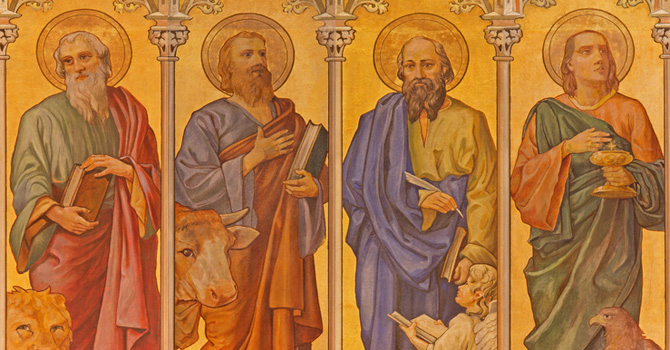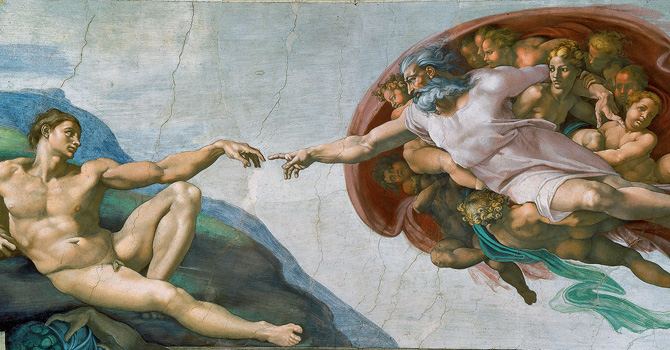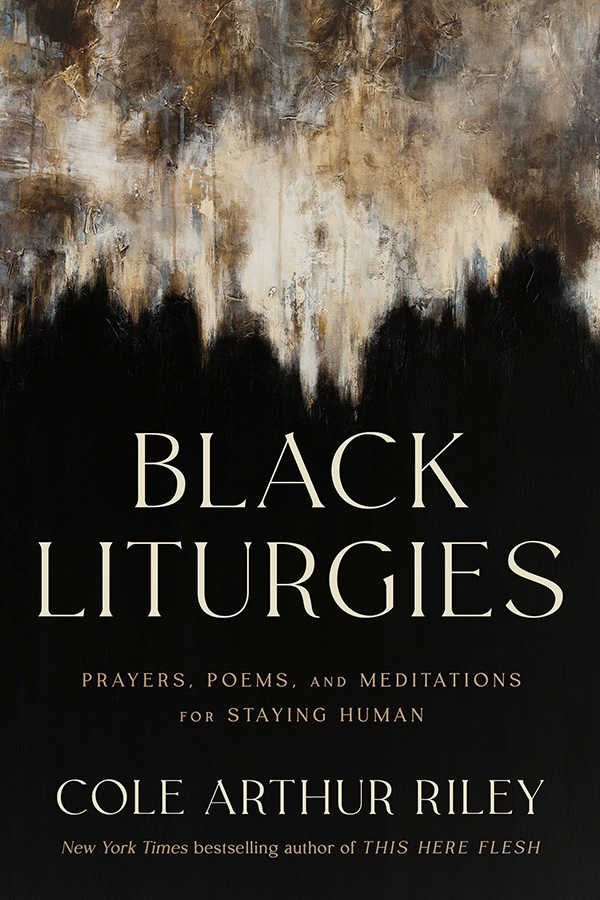It’s a sad fact that many Christian leaders no longer feel that they know how to read the Gospels. It is not their fault, really. For a long time their teachers in mainline divinity schools or seminaries did not know how to teach the Gospels. With some exceptions, New Testament professors were content primarily to point out the differences between the four Gospels. “What do you make of the fact that in Matthew Jesus apparently rides on two colts into Jerusalem while in the other Gospels he’s on only one?” And they would leave it at that.
These kinds of differences between the Gospels have recently become fertile ground for spiritually deformed exploitation of our simple trust in the Gospels to tell us the truth about God and the world. In this way of thinking, the differences between the Gospels are seen only as problems, evidence of the Gospels’ faulty witness. Quite naturally, of course, the Gospels are then thought to invite a thorough debunking. It is true that such books sell and make lots of money for their authors and the publishing entourage -- which is all fine enough in its own way. The problem is that in the wake of poor training, this new wave of ignorance about the theological character of the Gospels looks even to Christian leaders a lot like knowledge. The upshot of this illusion is that many of us no longer actually read the Gospels to shape our thinking about Christian leadership.
But we should. If we are to think Christianly about how to practice traditioned innovation in the leading of our institutions, we could hardly find a better resource than the Gospels. Indeed, there are no more important texts in the Bible than the four Gospels that begin the New Testament. They and they alone actually narrate the life history of Jesus Christ. To read the Gospels is to become immersed in the foundational story of the Christian church and, therefore, in the pattern of traditioned innovation that sustains the church through time. How then should we think about the differences between the Gospels?
Certainly not by ignoring them or pretending they do not exist as, alas, many would evidently prefer. Indeed, any adult reader of the Gospels of Matthew, Mark, Luke and John will notice many substantial overlaps as well as the differences among them. For example, in Matthew, Mark and Luke, Jesus is tempted in the wilderness at the beginning of his ministry, but each Gospel tells this story in rather different ways. And in John the story does not occur at all, though a reference to it does (12:27).
At one level, the best way to explain the similarities and differences among the four Gospels is in terms of the level of a Gospel author’s knowledge of one or more of the other Gospels (or knowledge of the same traditions that appear in the different Gospels). To take only two common examples: it is generally believed, first, that both Matthew and Luke used Mark’s Gospel when composing their own accounts of the life of Jesus and, second, that though John was intimately familiar with many of the same basic traditions in the other three Gospels, he did not actually depend on any of them when writing his own.
But this kind of explanation of Gospel differences and overlaps only gets us so far. It does not help us understand what we are to make of the existence of such differences -- the theological importance of the fact that the Gospels depend upon each other, or common traditions, and yet go their own distinctive ways. What is the theological good toward which this reality is oriented?
If thought about carefully, the differences and similarities between the four Gospels are not obstacles to understanding them -- as is frequently alleged in public or popular discussion -- but are instead a rich reflection of the way in which the Bible as a whole mediates God’s redeeming presence to the world. Indeed, Matthew’s and Luke’s use of Mark provide remarkable instances of the larger biblical pattern of traditioned innovation, the term that describes the character of God’s grace as at once preserving and renewing.
In this case, certain essential elements of tradition about Jesus as narrated in Mark’s Gospel -- his preaching, parables, healings, friends, enemies and so on -- are both preserved in their relative order and details and simultaneously transformed by their incorporation into different narrative frameworks. Moreover, these different narrative frameworks are not simply small variations on a similar theme but are the result of artistic literary innovation. Luke, for example, is not only a scholar of tradition (“eyewitness” and otherwise 1:1-4), he is also a skilled writer whose theological imagination results in a new overall construal of the meaning of the life of Jesus (Gospel of Luke) and its outworking in the mission of the church (Acts of the Apostles). Luke’s incorporation of well over half of Mark’s text within a considerable expansion of the total picture points to the working of traditioned innovation at a deep level in the formation of the first three Gospels: the tradition is indispensable to the innovation even as the innovation extends significantly beyond the reach of the earlier tradition. Both Matthew and Luke have not only preserved but also have expanded the core of Mark’s theological witness to the life of Jesus.
In the case of the Gospel of John, we see an even more radical innovation on the significance of Jesus of Nazareth. Crucial events in the life of Jesus are shifted chronologically (for example, Jesus’ demonstration against the money changers in the Temple is moved from the end of his ministry to the beginning), and the theological truth about the identity of Jesus that was realized only after his resurrection is mediated in the Gospel narrative through Jesus’ own speech prior to his actual death and resurrection (for example, “before Abraham was, I am” John 8:58). Despite this narrative freedom vis-à-vis Jesus tradition, the Gospel of John is emphatically not a gnosticizing departure from the historical figure of Jesus -- a spiritualizing rumination on the secrets disclosed by Jesus’ discourse with his disciples. It is instead a theologically innovative renarration of the cosmic importance of this one, concrete human being. The divine Logos is the fleshly Jesus (1:14), not an abstract spiritual principle or a key to the gate of secret knowledge. As has often and rightly been noticed, John’s innovative construal of the life of Jesus of Nazareth simply makes explicit what is implicit in the tradition of the Synoptic Gospels.
To read the Gospels is thus once again to encounter the biblical shape of traditioned innovation. Seen as a whole and in relation to one another, the four canonical Gospels display the reality of a living tradition and the innovations it both generates and depends upon for its ongoing transmission in the life of the church.
Questions to consider
Questions to consider:
- How did you learn to read the Gospels?
- What is the theological importance of the differences between the Gospels?
- What can Christian leaders learn from the Gospels, and why must we continue to read them?













